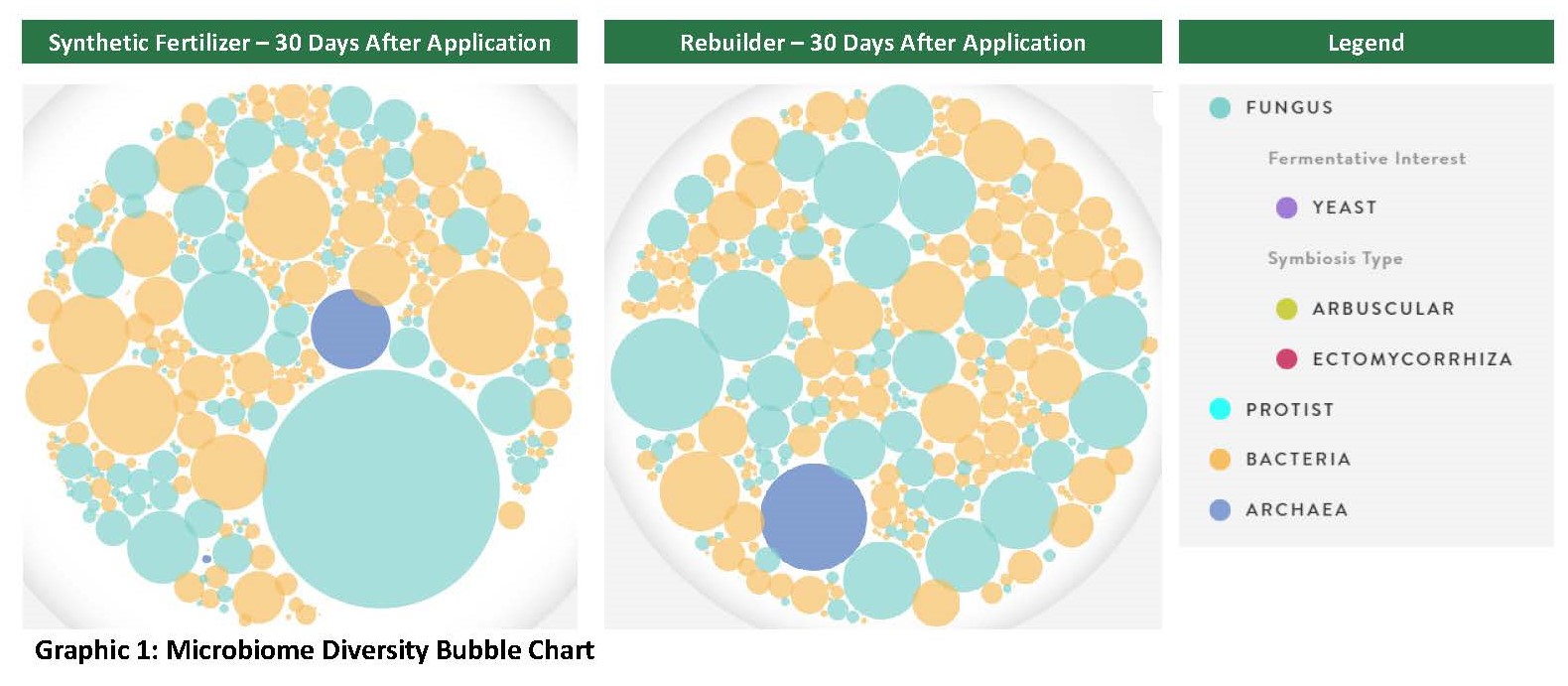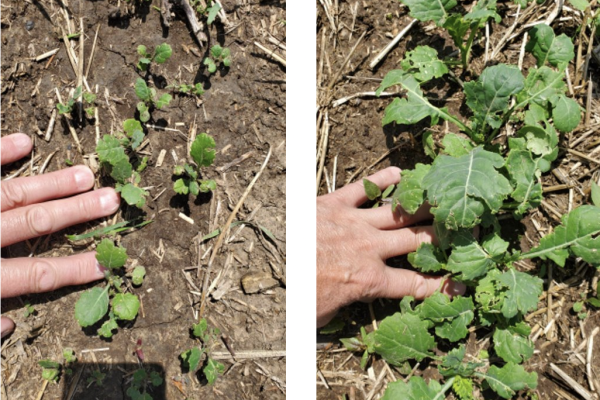In our “Soil Solutions” series, we’ve explored the revolutionary impact of biofertilizers, demonstrating how they breathe new life into our soils and propel crop yields without harming our environment. Today, we embark on the final chapter of our journey, driven by the idea that sustainability in agriculture is not just a goal; it’s a shared mission.
Competing Microbes and Plant Access
A groundbreaking study at the University of California, Riverside, unveils a fascinating aspect of the natural world – the competition between microbes for access to plants. It all starts with understanding that plants, in their own right, are selective about the microbes they allow into their roots. While a plant has some control, it’s not absolute. Here’s where the competition begins.
According to the study, bacteria which demonstrate positive effects on plants in controlled laboratory conditions often find themselves in a different league when faced with the challenges of real-world fields. Some soil microbes set up shop in the root zone of plants, providing essential nutrients and water while gaining access to carbon produced by their host plants. However, not all bacteria are created equal and must compete for this valuable space.
Microbial Rivalry in the Soil
Joel Sachs, an associate professor and vice-chair of biology at the University of California, Riverside, leads a research team dedicated to understanding the intricate dynamics of microbe-plant interactions. They focus on rhizobia, the bacteria influencing root development and promoting plant growth. The central challenge, as Sachs puts it, is to make these bacteria sustainably encourage plant growth without resorting to chemical fertilizers. And it doesn’t stop there; the bacteria must perform admirably even when faced with competition from other strains better adapted to the field conditions.
Under controlled conditions, the researchers could isolate and inoculate plants with specific strains of microbes. The results were astounding – certain strains provided significant benefits, leading to improved plant growth. However, the real complexity emerged when these promising strains were introduced to natural conditions. They often couldn’t replicate their success here due to fierce competition from various other strains.
This fundamental finding poses an important question: If such challenges exist in a controlled lab experiment, what might happen in a field trial?
Replenish Nutrients, in collaboration with Biome Makers, has completed multiple years of research to interpret the transformative effects of our products on soil microbial diversity red with conventional synthetic alternatives. The research utilized their innovative BeCrop technology, which harnesses the power of DNA sequencing to identify and group microbial species. The goal was to understand how synthetic and Replenish Nutrient’s products interact with the soil in natural conditions.
Before delving into the results, let’s clarify the principles guiding our products and our strong commitment to soil health.
Sustaining Agriculture: Harnessing Soil Microbes for Health and Yield
The pursuit of sustainable agriculture drives innovation at its core. Replenish Nutrients, a leader in regenerative fertilizer solutions, understands the significance of this challenge. Our approach is rooted in harnessing the power of natural processes and soil microbes to create a more sustainable and productive agricultural product.
A farmer’s top 15 cm (6 inches) of topsoil should be considered the largest feedlot they must manage. In a typical soil sample, billions of microbes are found in a single tablespoon. This includes various types of bacteria, fungi, archaea, protozoa, and other microorganisms. If growers managed the health of their topsoil like a living, breathing feedlot operation, we believe there is a direct correlation between soil health and greater yields.
In a feedlot, animal health plays a crucial role in the overall performance and sustainability of the feedlot operation. Healthy animals exhibit faster growth, play a pivotal role in avoiding disease outbreaks, minimize the need for veterinary care and treatments, and, in the end, contribute to increased profitability. This philosophy resembles how a healthy microbial community can improve soil functionality, plant hormone production, and stress adaptation. Microbial diversity can reduce the need for herbicides and fungicides, resulting in more efficient pest management. It can help optimize nutrient availability, thus improving return on investment (ROI) for the farmer.
Replenish Nutrient’s products feed crops and the soil by demonstrating the ability to increase the diversity and quantity of beneficial microorganisms. Our biofertilizers enhance soil health and promote plant growth by improving soil functionality and abundance of organic matter.
The Proof of Replenish Nutrients
You don’t need to take our word for it. Our research partners at Biome Makers have completed multiple years of testing on the Replenish Nutrients products using their BeCrop technology. The peer-reviewed results underline the effectiveness and sustainability of our products. The evidence is clear, and our commitment to sustainable agriculture stands strong.
In comparative studies against conventional synthetic programs, Replenish Nutrients’ product line showcased significant advantages:
- Enhanced Phytohormone Production and Stress Adaptation: The application of Replenish Nutrients products resulted in improved phytohormone production, particularly gibberellin and abscisic acid. This contributed to enhanced plant growth and resilience against environmental stressors.
- Increased Microbial Diversity: Replenish Nutrients products outperformed standard synthetic fertilizers by fostering greater microbial diversity and variety in the soil. This diversity is crucial for maintaining soil health and promoting nutrient cycling.
- Optimized Nutrient Uptake: In fields where our product was applied, there was potential for improved nutrient uptake by the plant, specifically in the case of manganese. Additionally, there was an increase in microbial communities which support fungicidal agents, enhancing natural pest management.
- Plant Growth Regulators: Replenish Nutrients products exhibited the potential to stimulate the production of Cytokinin, a plant growth regulator. Furthermore, it introduced various microbial communities that support insecticide agents, offering enhanced pest control.

Graphic 1 illustrates the microbial diversity and population in the soil, as identified by Biome Makers technology, 30 days after the application of fertilizer.
So What?
In modern agriculture, it’s essential to definitively answer the ‘so what?’ question. We’ve established that Replenish Nutrients’ products, rooted in the potential of soil microbes, actively contribute to an upsurge in microbial diversity within the soil. However, let’s delve into why this is a game-changer and what it ultimately means for growers.
Increased microbial diversity isn’t just a lofty concept; it’s a transformational force for soil health and, consequently, the prosperity of growers. These diverse microorganisms, from beneficial bacteria to fungi, are the unsung heroes behind nutrient cycling, organic matter decomposition, and overall soil functionality. They are the architects of thriving, productive crops.
When your soil hosts a thriving community of diverse microorganisms, it translates into tangible advantages. Nutrient availability soars, fueling robust plant growth and increased yields. Soil structure becomes resilient, bolstering water retention and efficient drainage. The reliance on herbicides and fungicides dwindles, ushering in more effective pest management. Your return on investment (ROI) skyrockets as nutrient management becomes nimble in volatile fertilizer markets.
While Replenish Nutrients products have shown their capability to boost the population of beneficial microbial species, it’s essential to acknowledge that the final selection of which species are absorbed by the plant remains subject to the complex interplay of natural factors.
So, the resounding ‘so what?’ is this: Greater microbial diversity within the soil is the master key to unlocking an era of sustainability, profitability, and eco-friendliness in agriculture. Replenish Nutrients’ dedication to soil health aligns perfectly with our unwavering commitment to the success of every grower. The evidence is unequivocal, and the pathway to healthier soil and bountiful yields is paved with the vibrancy of diverse microbes.


